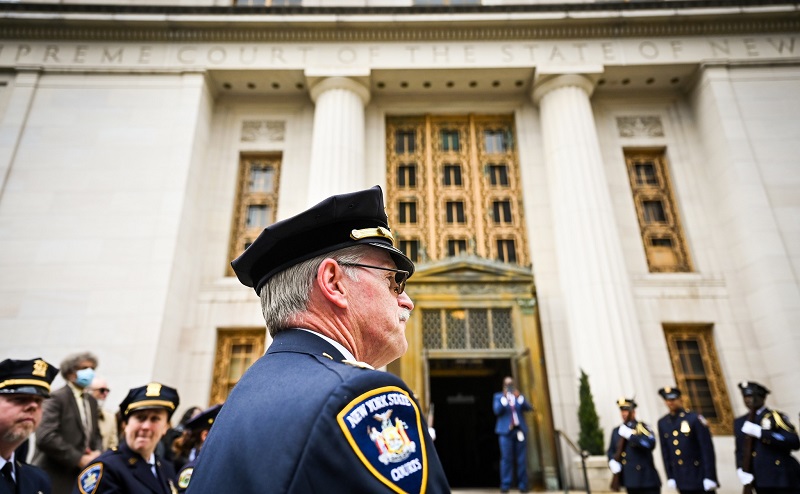
With the massive undertaking regarding former President Donald Trump’s arrival in New York City and rogue Soros-planted Manhattan District Attorney Alvin Bragg generating his version of a “perp walk,” we witnessed the presence of and coordination by court officers maintaining some semblance of control and direction throughout the hyperbole and fanfare.
So, who are these court officers with dominion over criminal justice buildings and the halls and rooms divvying adjudication?
With law enforcement academy training equal to counterparts working the streets, aspirant court officers apply, get vetted, and endure the typical multi-phase hiring process for however long it takes, then receive the conditional letter inviting them to prep for the physical rigors and classroom academia at the New York State Unified Court System academy.
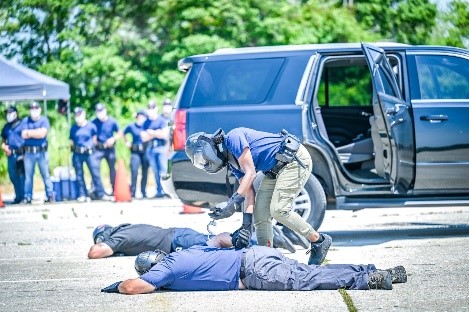
(Photo courtesy of the New York State Unified Court System.)
“Each officer completes four months of basic training including classroom instruction on criminal law, civil law, family law, constitutional law, and arrest procedures, along with training in such areas as intermediary weapons, including baton, pepper spray, and firearms; proper use of force; first aid, CPR, and basic life support; crowd control; tactical communications; domestic violence awareness and mandatory reporting obligations.”
Other than the fundamental training all law enforcement officers endure, court officers also compete for roles on special teams for extraordinary events, even in judicial settings. The NYS Unified Court System cops have a Special Response Team (SRT), its unit members enduring five days of intense physical agility to determine who qualifies.
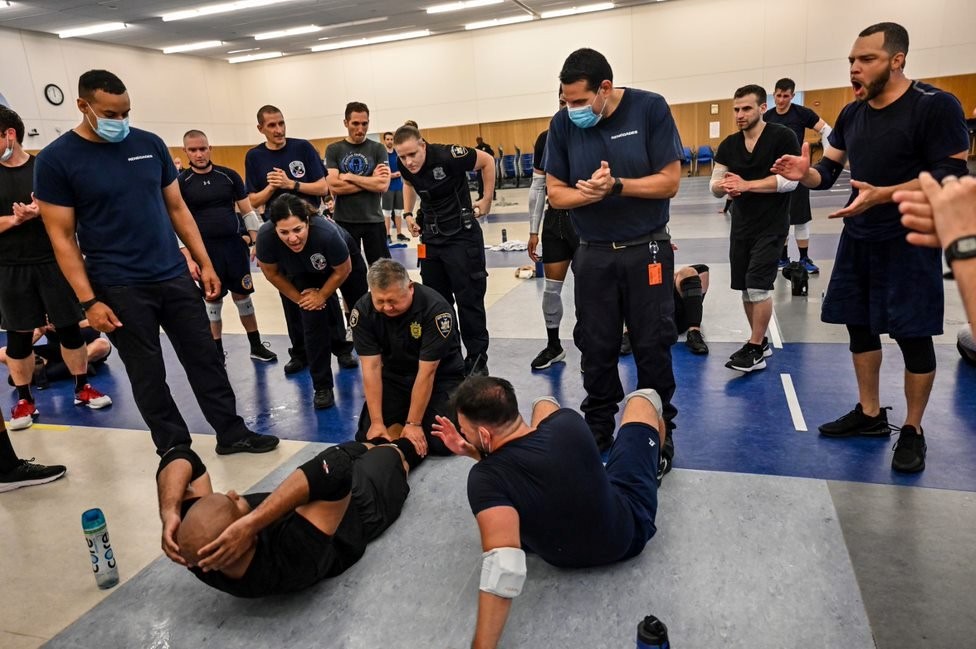
(Photo courtesy of the New York State Unified Court System.)
Once an SRT slot is secured, court cops are ideally suited for non-conventional law enforcement responses: “Their assignments include, but are not limited to, specialized judicial protective escort in non-courtroom settings; chemical, biological, radiological, or hazardous material incidents; high profile and multiple-defendant cases; and cell extractions under a judicial force orders.”
Like law enforcement officers working a beat, needing enjoyable activities to decompress from The Job’s avalanche of anarchy and woeful encounters, court officers endure mostly the mental challenges of what they overhear in a litany of criminal cases tried before the bench. Just think how many murderers court officers are near, on a daily docket of defendants accused of taking a life (or several) and the malicious ways they hatched horrors…
The NY State Unified Court System officers started a hockey club, informally, to let out steam during a chill game of physical exercise and camaraderie of cops. No surprise there, with New York State’s “reform” laws bizarrely guaranteeing a buffet of bad behavior from criminals; the revolving doors of justice have court officers seeing the vicious cycle on repeat.

(Photo courtesy of the New York State Court Officers Hockey Club.)
A bit of history: The New York State Court Officers Hockey Club commenced informally, then became a contender among other police agency hockey clubs. I started following some of this demographic: games played resulted in raising funds which teams spread throughout the law enforcement community (police families in need due to unfortunate circumstances) and the general population. Givers —not takers— just like every other LEO, no matter the jurisdictional uniqueness.
“Our motto —‘Face-Off for a Cause’— has never been truer. As a designated 501 (c)(3) non-profit, our goal is to always help those in need through hockey [again showing how LEOs are typically a resourceful lot], and to say we have been doing it for our now 20th season is something we can certainly hang or buckets on.
“It’s hard to believe that we have come to this amazing milestone, but the 2022-2023 season marks our 20th as an organized law enforcement hockey club. What started out as a small group of Court Officers who were hockey players in Brooklyn and Long Island, who wanted to play for fun, our team has become one of the most recognizable and respected law enforcement sports clubs in the Northeast!”
A face-off of an entirely different animal…was the lump-in-throat response by law enforcement officers from all corners, including the courts’ cops.
The NY State Unified Court System police academy is based in Brooklyn and is named after three of its court officers who perished during valiant efforts to save others in the Twin Towers and proximal area.
A bulletin posted in September 2021 indicated the following:
“The New York State Unified Court System on Friday commemorated the 20th anniversary of the 9/11 attacks, honoring three Court Officers — Captain William “Harry” Thompson and Sergeants Thomas Jurgens and Mitchel Wallace — who were killed that day at the World Trade Center.
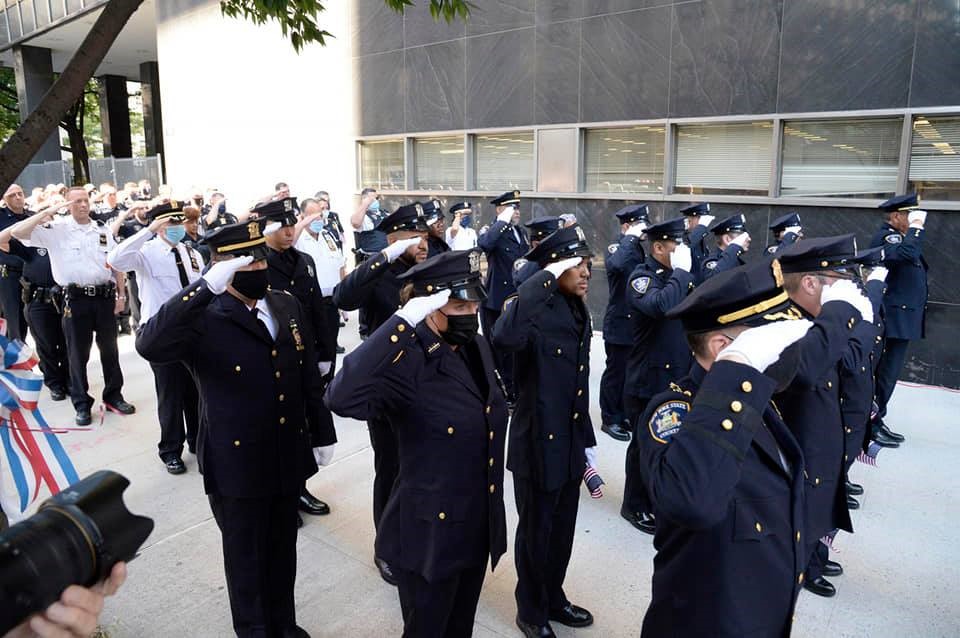
(Photo courtesy of the New York State Unified Court System.)
“The commemoration was held at the Court Officers Academy in Brooklyn, which is named in honor of these three men.
“These Officers, and scores of their fellow Court Officers, joined thousands of first responders who risked or lost their lives in the wake of the terrorist attacks.
“Ceremonies were also held at courthouses around the state. The commemoration included a video with the recollections of Court Officers who responded to the World Trade Center that day.”
Court officers may have a seemingly sole responsibility to safeguard judicial centers and all who work or visit them, but each one is equally trained as universal beat cops…so that any cause for concern can be addressed accordingly, whether in hallowed halls of justice or out in public.
A childhood buddy of mine who, like me, also harbored a career in law enforcement, applied to the NYPD and the NY State Unified Court System.
The latter called him first. Knowing how hard it was to secure a spot in law enforcement back then, he grabbed the torch passed to him and signed on, joining the ranks of NYS Court Officers a few decades ago.
After assuming the somewhat obscure duty of safeguarding court complexes and protecting every person in them, he scaled the rungs and achieved rank. Today, he is a captain overseeing a contingent of court officers in the five boroughs (counties) comprising New York City.
Before we conclude, we look way south, taking a gander at the 67 county sheriffs whose responsibilities engender providing courthouse security and judicial services provisions.
Each of Florida’s sheriff’s offices has what is generally referred to as a “Court Services Division,” staffed by certified law enforcement deputies who endure the same police academy and succeed state-mandated Criminal Justice Standards and Training Commission tenets.
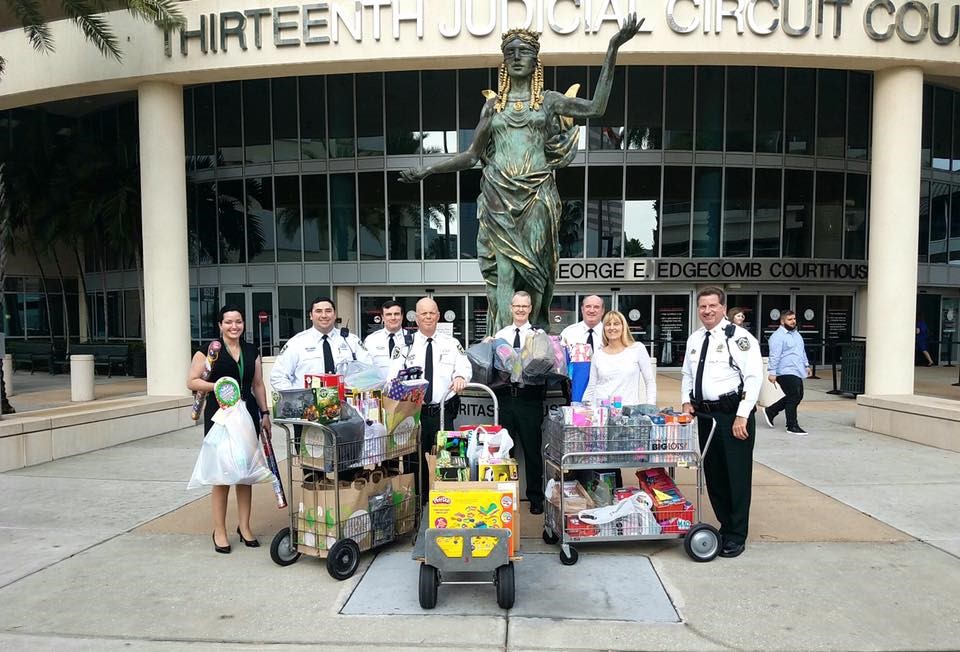
(Court Services Division deputies’ Toy Drive. Photo courtesy of the Hillsborough County Sheriff’s Office.)
Having chatted with several different county deputies assigned to the courthouse system throughout my years of testifying about cases I was involved in as a beat cop, the gist of securing a role in a county courthouse is largely based on seniority. Essentially, after many years of combatting crime and chasing down armed thugs with zero care about other living things, Court Services Division deputies get to be the relative facilitators of judicial proceedings and mitigators of all outbreaks big and small.
Always found it ironic, that after dealing with criminals until I was blue in the face (matching my uniform), eventually winding up subpoenaed and testifying against miscreants whose bizarre behaviors were among catalysts leading to their oft-resistant arrests, court officers had the judge backing them when/if anyone so much as walked into the courtroom wearing a hat or talking on their cell phone or starting any kind of dustup, before, during, and after any adjudication transpired.
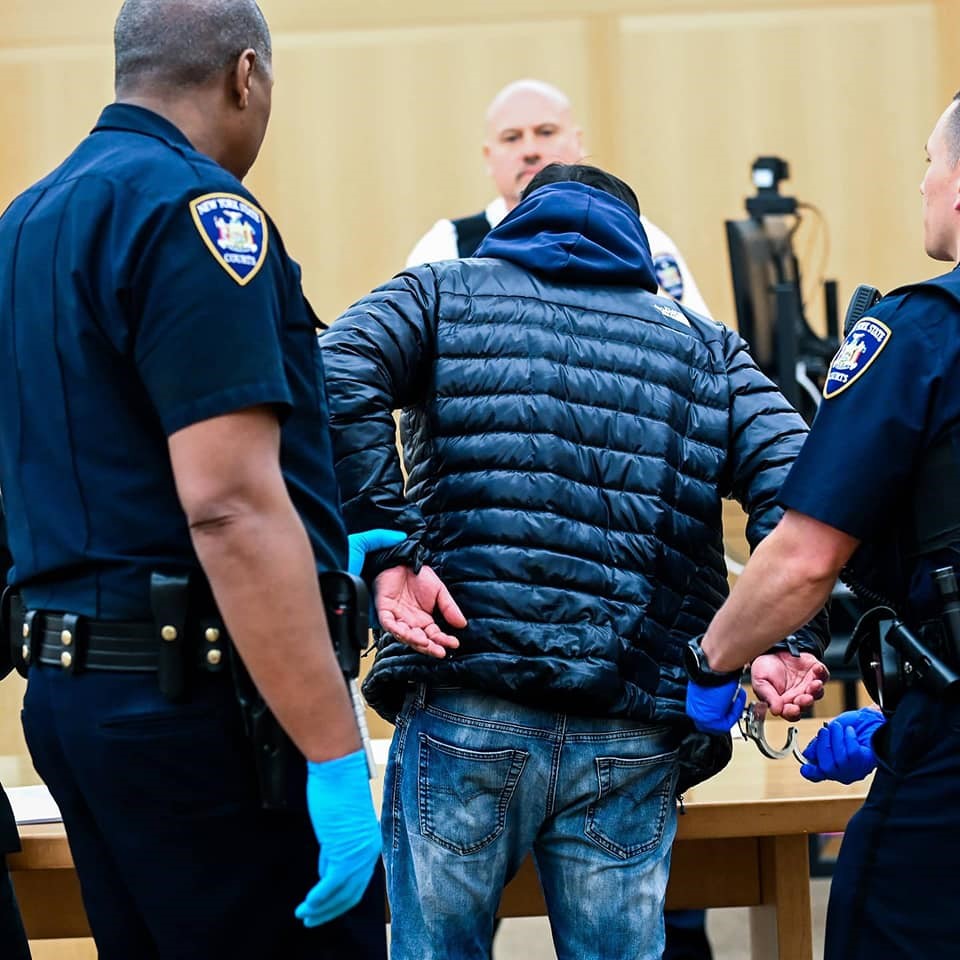
(Photo courtesy of the New York State Unified Court System.)
Most unsettled folks settled promptly after a court officer rang their bell. However, not everyone plays nice. Some were arrested on the spot. Some of those placed in custody stemmed from a judge ordering court officers to effect arrests. That brand of a judicial order is akin to a street cop having an arrest warrant duly endorsed by a judge and served upon the named party.
Reflective of Patrol officers arresting someone and transporting them to the county jail, court officers click the cuffs and walk the arrested party to on-site holding cells, incorporating them with defendants brought to the courthouse for hearings and trials. And it’s not just handcuffs but shackles placed around the courthouse-arrested individuals: The full monty.
Like corrections officers whose duty is to be among convicted criminals in secured prisons, court officers find themselves as the mid-point between jailers and beat cops, the latter of which commence the need for court officers overseeing trial proceedings and pillaring judicial centers.